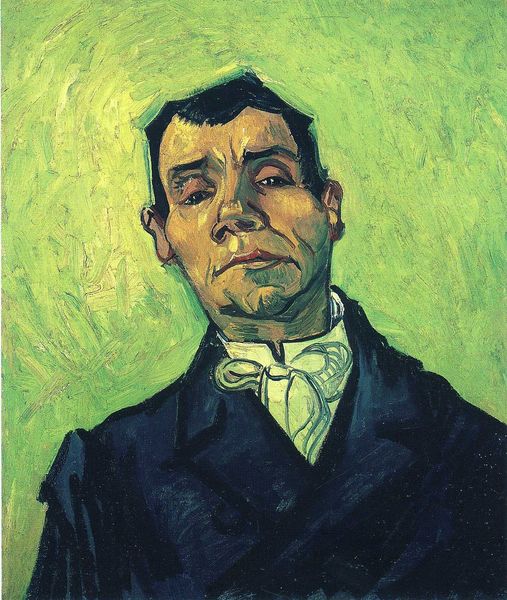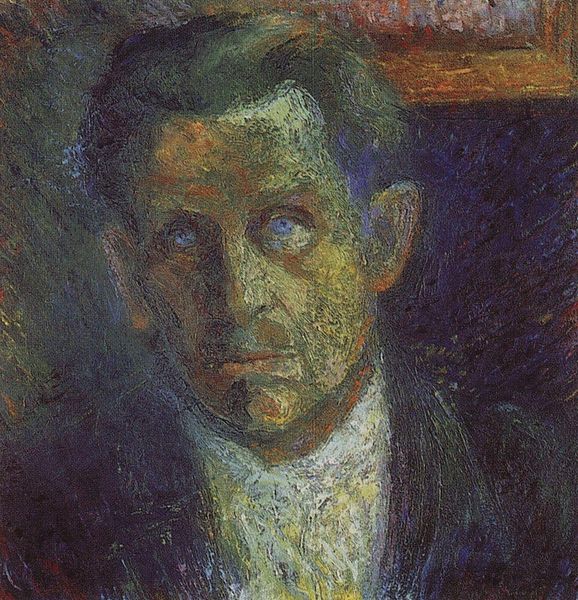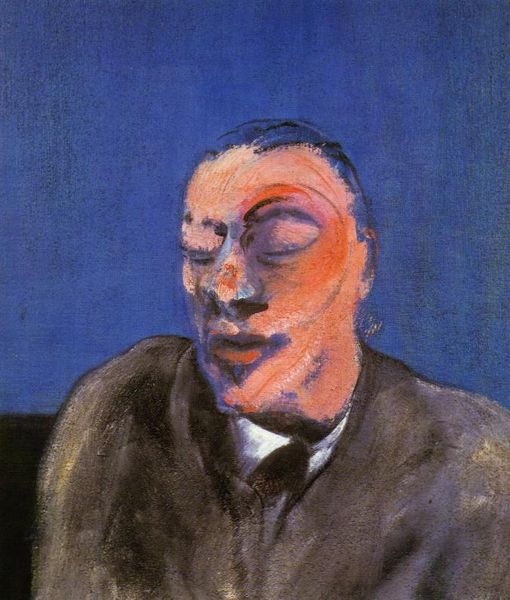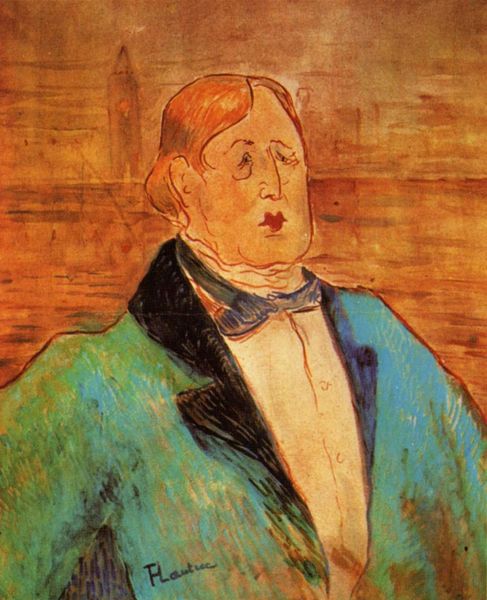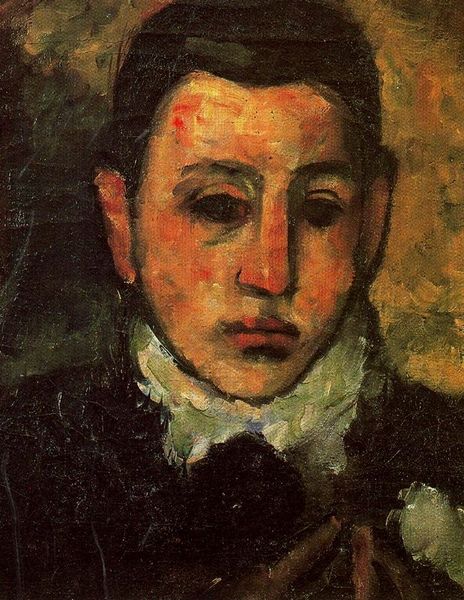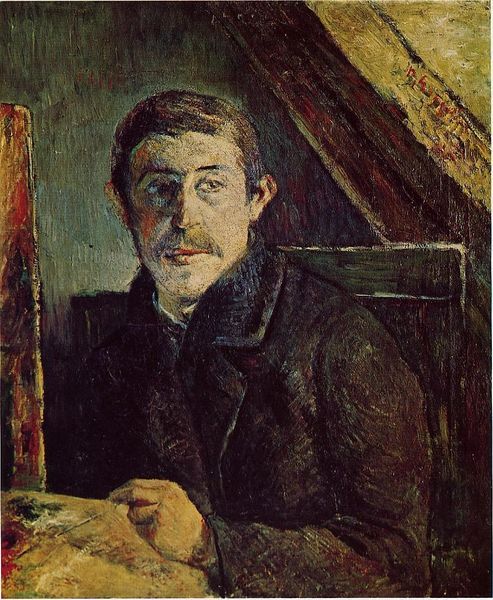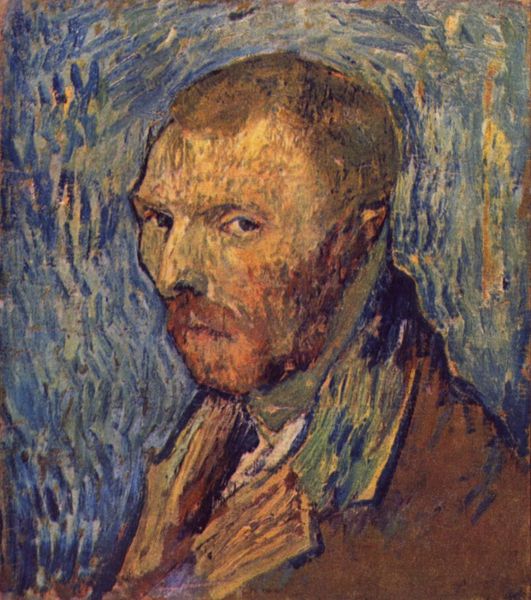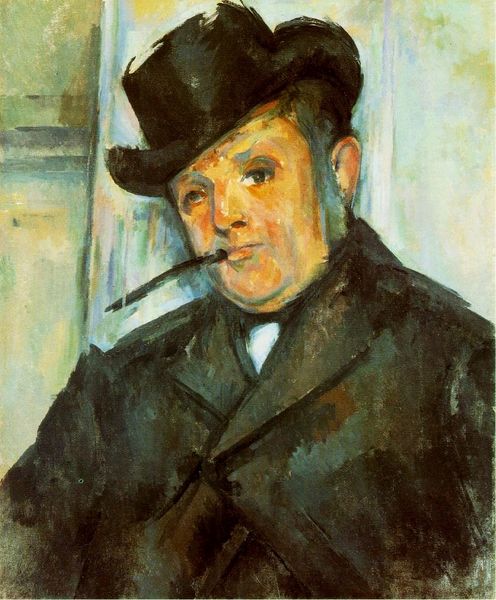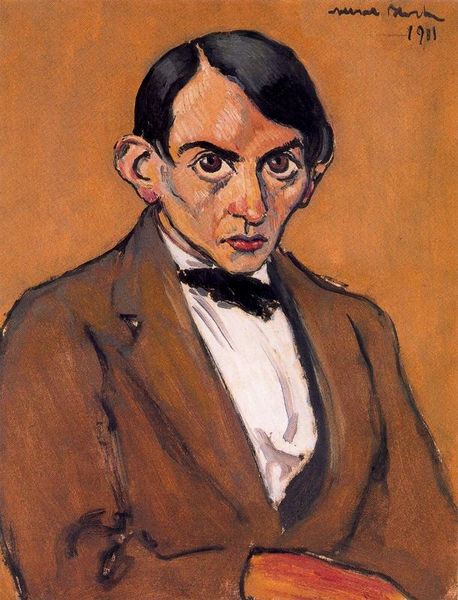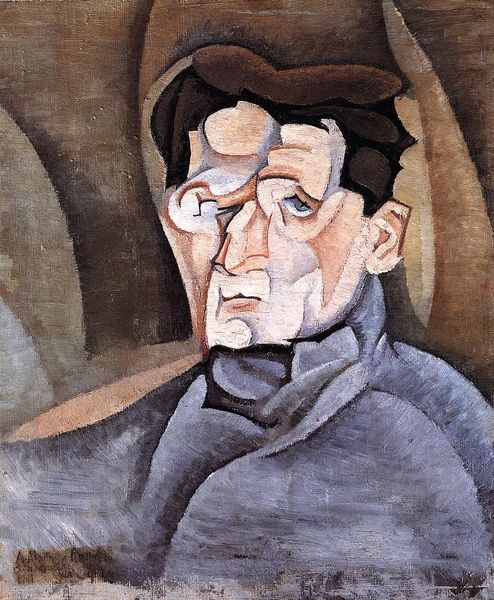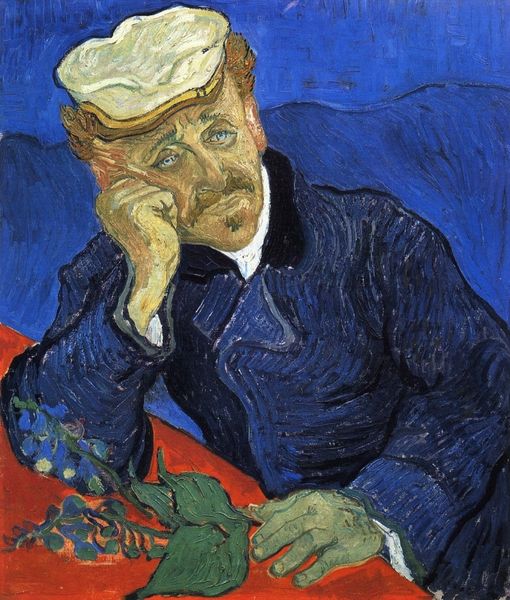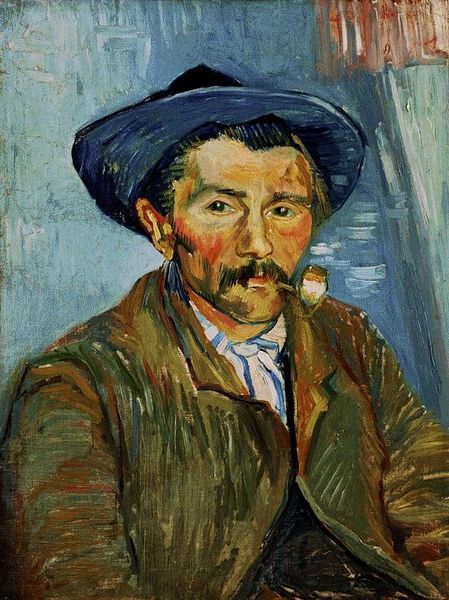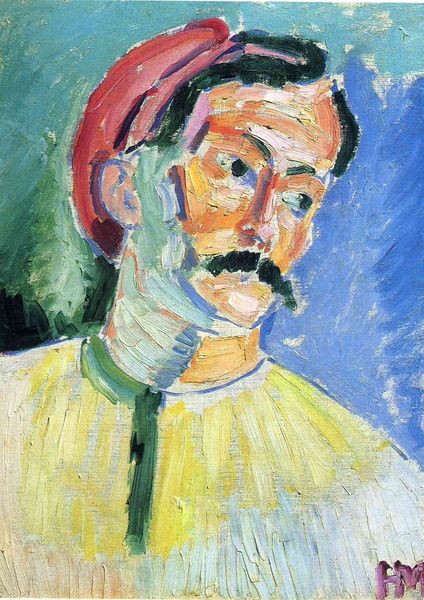
painting, oil-paint, impasto
#
portrait
#
self-portrait
#
painting
#
oil-paint
#
figuration
#
oil painting
#
impasto
#
post-impressionism
Copyright: Public domain
Paul Gauguin’s “Portrait of a Man Wearing a Lavalliere” is an intriguing study in the interplay of color and form, currently residing at the Van Gogh Museum. The subject's skin is rendered in an unsettling green, immediately disrupting conventional portraiture expectations. Gauguin’s bold use of non-naturalistic color serves to flatten the image, emphasizing its constructed nature. The background, a patchwork of yellow, green, and blue, presses forward, challenging traditional notions of depth. Note the stark contrast between the subject's greenish hue and the adjacent colors, creating a sense of unease. Through this formal arrangement, Gauguin destabilizes the traditional function of portraiture, moving away from mere representation towards an exploration of subjective expression. The portrait becomes less about capturing likeness and more about conveying a mood, an emotion, or perhaps even a critique of societal norms. The painting invites us to reconsider the codes of portraiture.
Comments
No comments
Be the first to comment and join the conversation on the ultimate creative platform.
